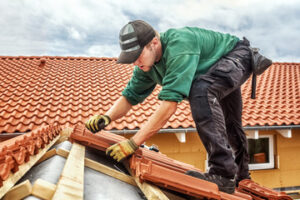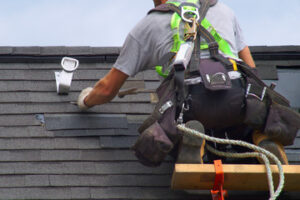Full frame replacement windows are custom made to fit into an existing window opening. Unlike new-construction windows, they do not have nail fins on the exterior edges.

They are a great option for homes that have major signs of rot or water damage and cannot support a new frame. They offer superior weather protection and energy efficiency. Let Your Home Exterior Solutions provide the expert help you need.
Window replacement is the best way to improve your home’s energy efficiency. New windows provide superior insulation and prevent air leakage. This will reduce your heating and cooling costs. Additionally, new windows will help to keep your indoor temperatures more consistent which will make your home more comfortable.
New windows will also enhance your home’s appearance. They offer a clean and modern look that will increase curb appeal. This will make your home more appealing to potential buyers when it comes time to sell.
When choosing a replacement window, be sure to select one with a high R-value and low U-value. The higher the R-value, the more efficient the window will be. Additionally, be sure to choose a window with a double-pane design and low-emissivity (low-E) coating. This will minimize heat transfer and help to keep your home cooler in the summer and warmer in the winter.
Another benefit of energy-efficient replacement windows is that they will reduce noise. This will be especially beneficial for homeowners who live near busy roads or in noisy neighborhoods. Additionally, energy-efficient windows will reduce drafts, which can be a major source of discomfort in homes.
Finally, energy-efficient replacement windows will help to protect your health by reducing greenhouse gas emissions and conserving natural resources. In addition, they will also improve the overall air quality in your community by reducing the demand for fossil fuels, which are a significant cause of air pollution.
Increased Home Value
One of the best parts about installing new windows is that they can increase your home’s value. Unlike some other renovations, such as kitchen or bathroom upgrades, home windows don’t just improve the overall look of your house; they can boost its curb appeal too. When potential buyers walk up to your house, they will form their first impression based on the state of your windows. If they are old and in disrepair, they’ll likely assume that the rest of the house isn’t well-maintained either. New replacement windows, on the other hand, give a clean and modern appearance. This is a great way to increase your home’s value and attract more buyers.
Additionally, new windows are a good investment because they can help you save money on energy bills. If you choose windows with a low-E coating, they’ll be more effective at keeping heat in during the winter and cooling in the summer, which can significantly cut your monthly utility bills. These savings can add up over time and provide you with a better return on your investment when you eventually decide to sell your home.
Replacement windows can also offer a variety of design options, so you can customize them to suit your taste. For example, you can add a bay window to your home to create a reading nook or extra seating area. You can even opt for bow windows, which are made from four or more windows that are angled together to add dimension and light to your space. No matter what style you choose, it’s important to find a company that has a reputation for quality craftsmanship and long-lasting products.
Increased Comfort
Whether you want to boost your home’s energy efficiency or just improve comfort, replacing old windows is an excellent investment. It can increase the resale value of your home and save you money on utility bills. Furthermore, new windows can help protect your home from future damage due to gaps and rot. Plus, they will eliminate uncomfortable window drafts.
When considering replacement windows, there are two options available: inserts and full frame windows. Insert windows fit inside the existing window frame and are ideal for homes with wood framed casings. If the existing frames are damaged beyond repair, then full frame replacement windows will be necessary.
Replacement windows are installed from the interior of your home. They’re easy to install, especially with the help of professional installers. In addition, they’re often more cost-effective than new construction windows. Moreover, they offer more customization options such as between-the-glass blinds and shades.
Another advantage of replacement windows is that they’re easier to clean and maintain than older windows. They also offer superior weather protection and energy efficiency compared to standardized options.
When deciding on your new replacement windows, it’s important to consider the architectural style of your home and its compliance requirements.
Increased Home Security
The majority of break-ins happen through windows, and while homeowners often focus on upgrading their alarm systems and installing security cameras, replacement windows can also play a crucial role in safeguarding the home. Thanks to advanced locking mechanisms, impact-resistant materials, and improved structural integrity, they make it much more challenging for burglars to break in and give homeowners the peace of mind they deserve.
Unlike traditional windows that shatter into dangerous shards on the inside, most modern replacement windows are manufactured with laminated glass or impact-resistant glazing. This innovative material is layered with special coatings or an interlayer of polyvinyl butyral (PVB), and it’s designed to withstand a significant amount of force, discouraging potential burglars from trying to smash the window in order to break in.
Furthermore, many of the new replacement windows available on the market today can be integrated with existing or planned home security systems. This seamless integration offers a more streamlined monitoring process and helps to ensure that all potential entry points are covered, giving homeowners peace of mind and added protection.
Moreover, modern replacement windows are fitted into the existing frames of older windows, making them less invasive and more cost-effective than other types of home renovation projects. This makes them an ideal solution for homeowners who want to improve their home’s aesthetic and energy efficiency without requiring extensive structural changes.
Reduced Noise
Many older windows allow external noises to make their way into a home. Whether it’s from noisy neighbors or traffic, replacement windows that are more soundproof can help keep your family in a peaceful sanctuary. The frames of replacement windows are often made from vinyl or fiberglass, which helps to reduce the amount of noise that seeps through them. Additionally, the insulated double-pane windows provide an additional layer of protection to your home.
The thickness of the window glass also plays a significant role in how much noise is reduced. Thicker glass is more effective at blocking sound because it is harder for sound waves to vibrate through denser material. For this reason, it is important to select a window with a higher STC rating (Sound Transmission Class) when making your purchase.
Additionally, choosing a replacement window with laminated glass is an excellent choice for those who want to minimize outside noises even more. Lamination is a plastic-like coating that is placed between two window panes, effectively dampening and dissipating any outside noises that would otherwise enter your home.
Finally, another simple way to reduce noise is to fill any small gaps around the frame and interior walls with acoustic caulk. This foam and silicone product seals off your home from unwanted noises and moisture, significantly reducing the amount of sound that can penetrate into your home.
Replacement windows are an excellent option for homeowners who want to improve their home’s appearance, energy efficiency, and comfort without the hassle of major construction work. The process is quick and easy, requiring minimal disruption to your home’s structure and existing aesthetics. In addition, they are also cost-effective and require less maintenance than traditional windows.








